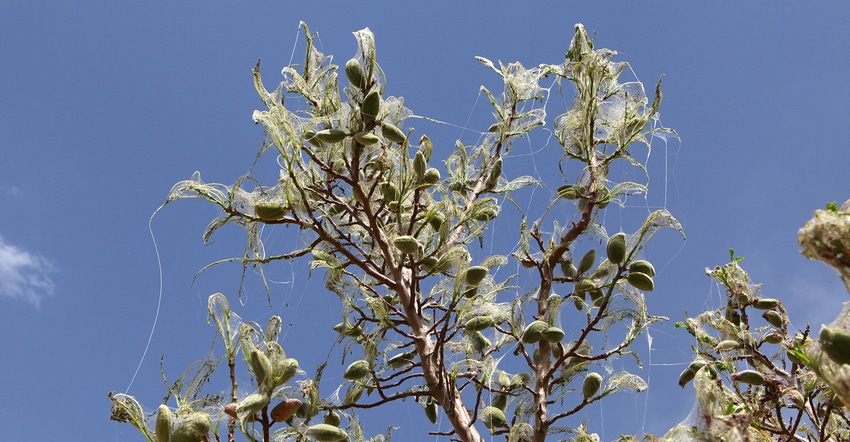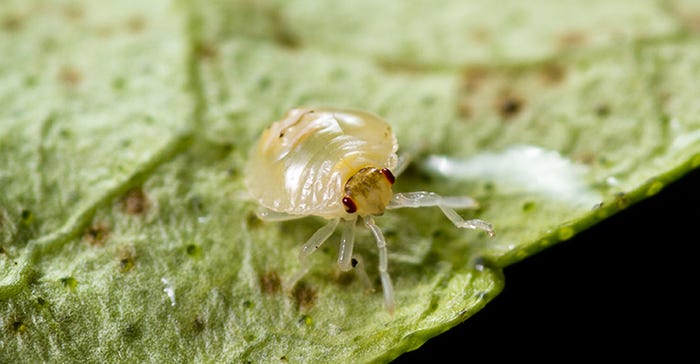October 11, 2018

Sponsored Content
Even late in the season and post-harvest, effective control of mites is something that growers can plan for as they look to 2019.
Spider mites, like the Pacific spider, reproduce rapidly in hot weather and commonly become pervasive in June through September. However, some growers may still see populations of the two-spotted spider mite still active in October if weather stays hot. One example is late-harvested crops such as certain wine and table grape cultivars in warmer regions of California. Another concern is the damage that high populations of overwintering spider mites can do to a crop next year.
If weather and food supplies are favorable, a generation can be completed in less than a week and an explosion of mites can defoliate a tree in a matter of a few weeks — or less. Spider mites usually are first found on trees or plants adjacent to dusty roadways or at margins of fields. Plants under water stress can also be highly susceptible.
If you missed the window of opportunity to spray for spider mites before harvest, it’s not too late. If high mite populations are present post-harvest, with low numbers of beneficial insects and predator mites, growers should consider a miticide application to reduce the spider mite load and overwintering females that will re-infest orchards or vineyards when the weather warms up next spring.

“In California, the shorter days and cooler nights mean that spider mites will start to go into overwintering mode,” says Darin Allred, technical sales support representative, Arysta LifeScience. “If you have a high population of adult female spider mites that overwinters now, they’re going to be waiting to hammer your orchard or vineyard early next year. In this case, a post-harvest, selective miticide application may be beneficial.”
Arysta LifeScience provides miticides with the flexibility that growers need: quick knockdown, long-lasting control, and selectivity on beneficial insects and predator mites, all for excellent IPM compatibility. The company also offers a broad portfolio of products for grapes, strawberries, almonds and walnuts.
VIGILANT® and ACRAMITE® Miticides provide the flexibility of controlling spider mites at all life stages while going easy on beneficial insects and predator mites. And since resistance management is a critical part of any IPM program, KANEMITE® Miticide offers a unique chemical subgroup for fast knockdown of all stages of spider mites while also being easy on beneficial insects and predator mites. Its short 7-day pre-harvest interval (PHI) provides the flexibility to be applied late in the growing season.
OMITE® Miticide works on a range of species including Pacific spider, two-spotted, and European red mites. It possesses a strong repellant and unique fuming action that make it effective even when heavy mite populations are present. OMITE is easy on beneficial insects and works well as part of an integrated pest management plan.

You can count on Arysta LifeScience for a complete line of trusted crop protection products and a staff dedicated to helping you manage mites or whatever pest issue you have in your fields or orchards. Contact your retailer or Arysta LifeScience sales representative for additional information, or visit www.arysta-na.com.
OMITE is a restricted-use pesticide. Always read and follow label directions. ACRAMITE, OMITE, and VIGILANT are registered trademarks of an Arysta LifeScience Group Company. KANEMITE is a registered trademark of Agro-Kanesho Company, S.A. Arysta LifeScience and the Arysta LifeScience logo are registered trademarks of Arysta LifeScience Corporation. © 2018 Arysta LifeScience Group Company. SPC-17108
You May Also Like




